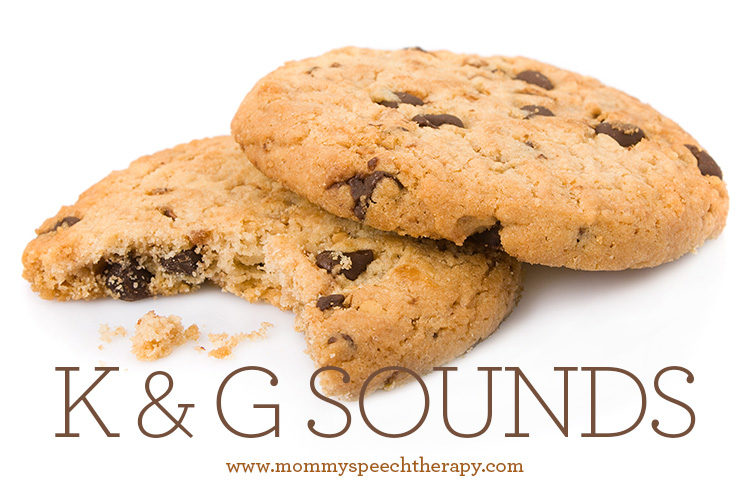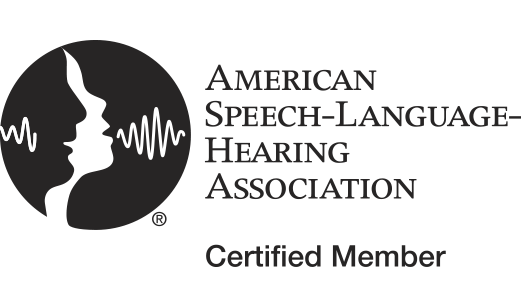I recently had a reader ask how to help her 4 1/2 year old daughter say the /k/ and /g/ sounds. These sounds can be tricky for little ones. Typically most children have mastered the /k/ and /g/ sounds by about 3 1/2 years of age. In this post I wanted to share some methods and excercises that can help kids with these sounds.
1. Use a tongue depressor (This method should be done by a certified Speech-Language Pathologist!)
With a tongue depressor push the tongue into the correct position for a /k/ or /g/ sound. While holding the tongue in the correct position have the child try to say the /k/ sound. If the child typically says the /t/ sound for the /k/ sound the tongue depressor will hold the tongue tip down and the child will end up producing the /k/ sound. The same goes for stimulating the /g/ sound. Allow the child to feel what it feels like to produce the /k/ sound correctly, then slowly pull the tongue depressor forward and out as the child continues to try to say the /k/ sound. The tongue depressor method is my favorite, and generally very successful. Some children however are unable to produce the sound when the tongue depressor comes out of their mouths. Keep working on it. Sometimes however, this may indicate oral-motor weakness.
2. Drink from straws
When a client struggles to produce the /k/ and /g/ sounds it is usually due to difficulties with tongue retraction/ oral motor weakness. Tongue retraction is the ability to elevate the back of your tongue. Difficulties retracting the tongue can be observed when the client drinks from a straw. Suckling a straw (meaning a child puts more than a 1/4†of the straw in their mouths while drinking) is another instance where children exhibit the inability to retract the tongue. If children can be taught to drink from a straw with tongue retraction then they will be able to use that tongue retraction to produce /k/ and /g/ sounds in speech. Refer to my post on Pacifiers and Sippy Cups for more information on how to use a straw to teach tongue retraction for /k/ and /g/ sounds. If a child drinks thin liquids from a regular straw appropriately you can try strengthening the muscles even more using thick liquids like yogurt and pudding. This is referred to as a thickened liquids program. Be sure to consult an SLP if you are interested in trying the thickened liquids program.
3. The Fixed-Up One Routine from Dr. Caroline Bowen
Children with speech delays often have difficulty self monitoring their own speech. Dr. Caroline Bowen created a routine to teach children how to practice self monitoring their speech in a positive way.
For example she says:
“Say to your child, ‘Listen to this. If I accidentally said tar when I wanted to say car it wouldn’t sound right. I would have to fix it up and say car wouldn’t I? Did you hear that fixed-up-one? I said tar then I fixed it up and said car.”
Exercises like these really make a difference when you are ready for your child to start generalizing what they have learned into conversation.
4. Read books with lots of /k/ and /g/ sounds
Try to provide lots of good models of the /k/ and /g/ sounds for your children by giving them as much exposure to the sounds as possible. A good way to do this is to sit down with your children and read books that have lots of these sounds in them. It’s o.k. to slow down and overemphasize these sounds. Great books to use are letter books that target the sound you are working on.
Other Methods Commonly Used:
1. Lay on your back on the floor
This method is used because when you lay on your back on the floor your tongue typically falls into the back of your mouth. So producing a /k/ or /g/ while lying on the floor should to be easier.
5. Gargle water
Gargling water is another technique suggested. It is used because when you gargle water the back of your tongue is positioned correctly for the /k/ and /g/ sound. It can be successful if the client has the motor skills to gargle water.
*Remember, once you have had success getting your child to say the sound correctly it still takes time for them to say it correctly in conversation. They need to practice it at the word level first. I like the child to have success with a list of at least 20 words. Then they need to master putting words into sentences! Finally, I have them practice the sounds in short stories we have written together using the 20 target words we’ve practiced. Then we practice the sounds in conversation. This is the pattern that the word, sentence and story cards follow on the worksheets page.
These are just a few ideas and hopefully they will help any of you that might have kids in need of mastering these sounds. Best of luck!






48 Comments